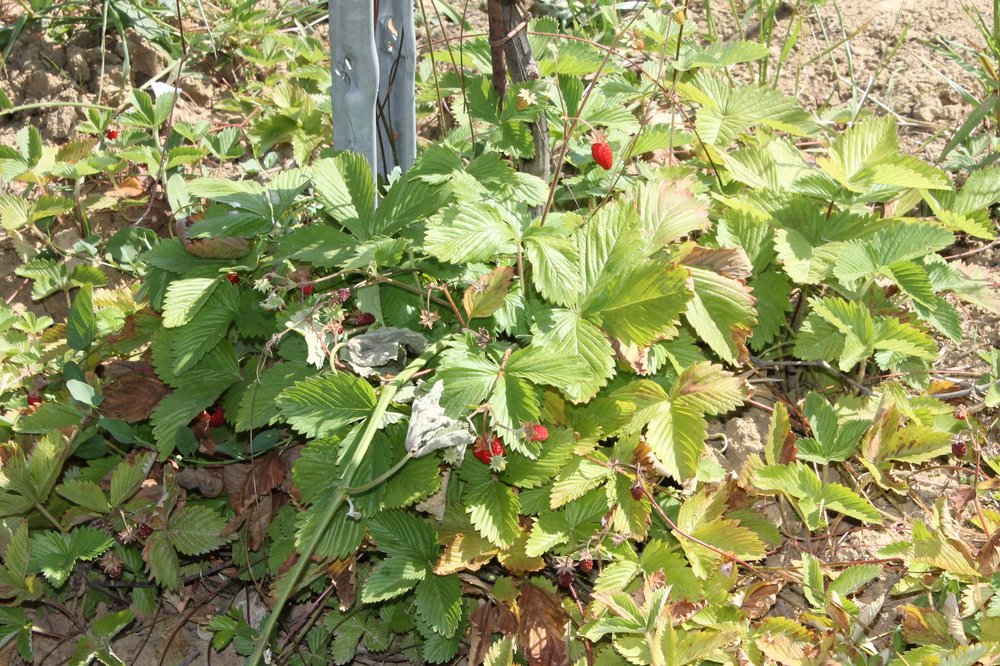Living mulches for weed control under the row – technical tips for the selection of suitable species
Living mulch has been evaluated through a participative approach involving researchers and producers. Several advantages, as well as some weak points, of the technique have been showed, and some technical tips have been issued from the practical activities.
The advantages of a living mulch
Low input weed management is the first advantage derived from introducing living mulches. Such a service is especially relevant for the area surrounding the trunk, where management is particularly complex and requires frequent manual interventions.
Furthermore, to install a permanent mulch guarantees a constant soil cover. Especially on hilly regions, thus means to drastically reduce the risk of erosion and leaching during rainy periods, compared to mechanical tillage. Mulching species could also provide accessory agroecological services. They can contribute in creating resilient biological communities; biodiverse populations able to dynamically evolve, matching the changes on environmental conditions.
Such rich communities provide organic residues to the soil, thus improving its chemical, physical and biological fertility. They could also attract beneficial insects for the main crop. Several species could also have a positive aesthetic impact, particularly relevant where there is a direct relationship with consumers (Fig.1). Some of the species suitable for mulching are edible and could have a productive function providing a secondary income.
 Figure 1 Some mulches have an aesthetic value and can represent a commercial claim.
Figure 1 Some mulches have an aesthetic value and can represent a commercial claim.
Main characteristics of suitable species
The selection of promising species should be based on some relevant characteristics:
- Strong vegetative aptitude. The species must quickly cover the soil, competing with other weeds and setting a stable soil cover in the shortest possible time in order to reduce the need for soil management interventions (Fig.2).

Figure 2 Quick vegetative development for the management of the trunk area. - Shallow and fibrous root system. The mulch root doesn’t have to interfere with the main crop development. Mulch root must exploit shallower niches for water and nutrient uptake (Fig.3).

Figure 3 Stoloniferous species with a shallow root don’t compete with the main crop. - Small size. Especially in young orchards, mulch must present a short canopy to avoid competition for light.
- Perennial habitus. Soil cover has to be continuous over the year, and mulch has to remain alive over the seasons persistently avoiding other species penetration.
- Summer vegetative rest. Especially in dry areas, or when irrigation is not available, species with a double stasis (summer and winter) are preferable. The summer stasis reduces transpiration and competition for water uptake.
- Flexible winter stasis. To overcome periods with hard cold, but also to allow vegetative growth whenever soil temperature exceeds the 4-6 °C.
- High adaptability to local pedoclimatic conditions. It is preferable to select spontaneous species locally available, or local varieties of cultivated species (autochthonous ecotypes) that guarantee the highest possible success.
Stoloniferous species (with offshoots/runners) possess several desired characteristics. (Fig.4).
 Figure 4 Runners production guarantees a quick soil colonization.
Figure 4 Runners production guarantees a quick soil colonization.
They can be issued from the local flora: i.e. several subspecies of Potentilla are particularly promising. Among the horticultural species, the strawberries, when local ecotypes are selected, represents an interesting option, also for the secondary income potentially provided.
Read more at the CORE Organic website: www.coreorganic.org, find publications from the project at:
http://www.domino-coreorganic.eu/Financial support for this project has been provided by funding bodies within the FP7 ERA-Net CORE Organic Plus, and with cofounds from the European Commission.
Authors info
Serena Polverigiani, Matteo Zucchini, Davide Neri. Università Politecnica delle Marche. Italy.
